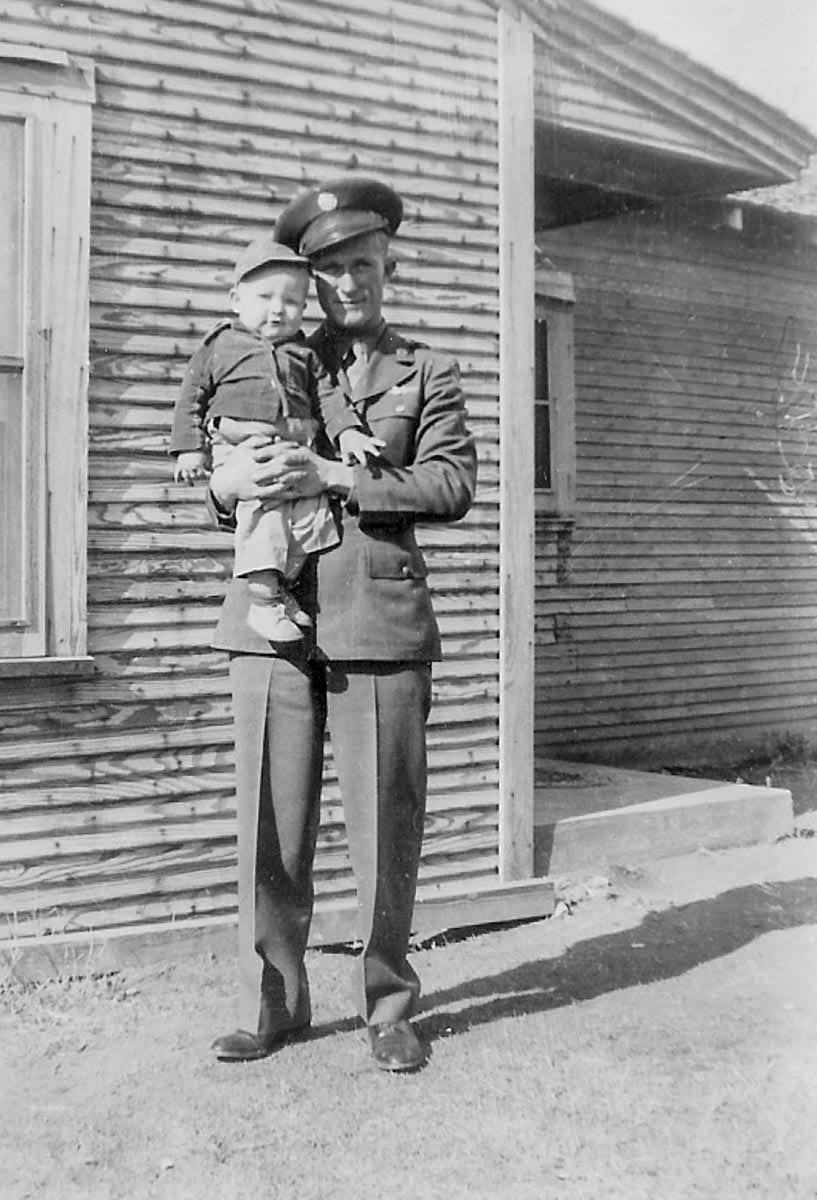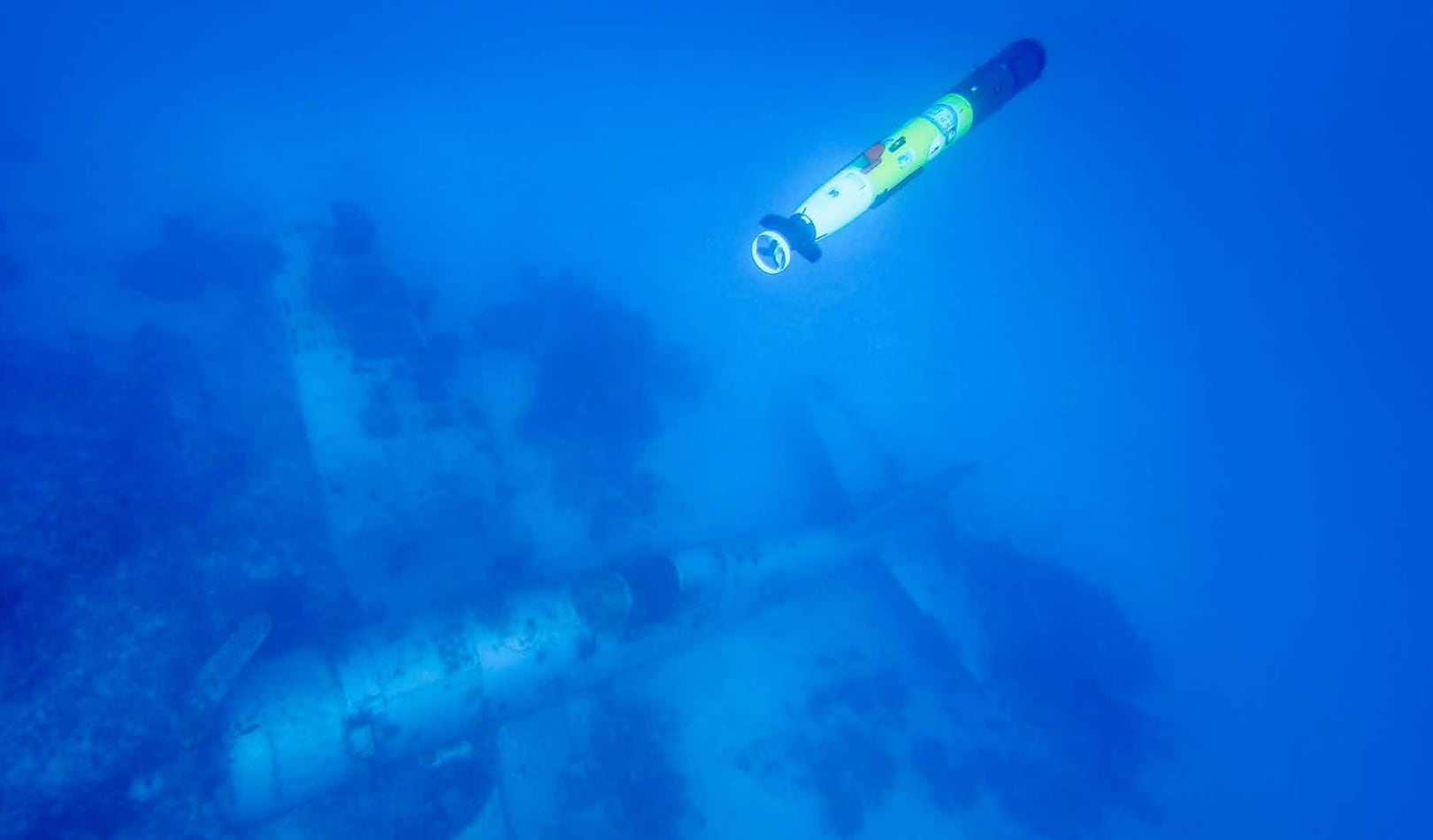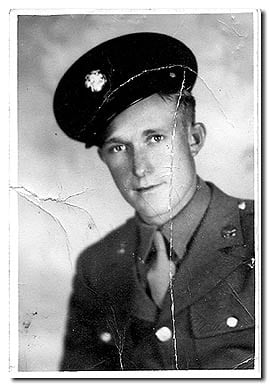Friday marks 41 years since then President Jimmy Carter proclaimed a national day of remembrance for those Americans captured or still missing from war.
For active duty Marine Lt. Col. Casey Doyle, National POW/MIA Recognition Day is a day of remembrance not just for the role his grandfather, Jimmie Doyle, played in WWII, but also for the emotional rollercoaster he and his family went on for 10 years searching for the remains of his grandfather, who went missing in action in 1944.
The Defense Department’s POW/MIA Accounting Agency works to recover the remains of Americans unaccounted for since WWII. Its work is usually kept secret to protect the POW/MIA next of kin. In the case of Jimmie Doyle, the family was heavily involved in the process through a non-profit organization called Project Recover. Because Project Recover began working on locating Jimmie Doyle’s remains before his B-24 bomber was discovered and DPAA got involved, the Doyle family was able to constantly “probe for information,” Doyle said.
“During these years, I was back and forth between Iraq and Camp Pendleton, so I was pre-occupied,” Doyle told Military Times in an email Thursday. “I didn’t want to get my hopes up, and I especially didn’t want to get my father’s hopes up on the (high probability) chance that nothing would really be discovered or answered.”
Growing up, Doyle didn’t hear much about his grandfather and neither had his father, Tommy Doyle, who was 2 years old the last time he saw his own father.
“Beyond my myopic, self-centered focus, I didn’t understand that my father was simultaneously shouldering the hopes of finding out what happened to his father in war, but also wondering what might happen to his only son in a different war,” Doyle said. “That’s a dual burden I will never have to bear, but also one that I cannot even envision at this point in my own journey as a father.”

Project Recover
Finding the remains of those Americans killed or lost during wartime isn’t easy. It takes a lot of detective work and even more perseverance.
For Project Recover, “the process has been evolutionary,” founder Dr. Pat Scannon told Military Times. What started in 1993 as a curiosity turned into collaborative between Scripps Institution of Oceanography, University of California, San Diego and the University of Delaware.
Sometime in the next year, COVID-19 permitting, Scannon and Project Recover will conduct its first formal recovery in conjunction with the Defense Department’s POW/MIA Accounting Agency.
“We’re essentially doing everything now, all the way from the pooling of possible crash sites to the archival and historical and other interviews, to the search missions and ultimately to recovery missions,” Scannon said.
The details of the repatriation are very much a secret right now, Scannon said. He’s waiting on DPAA’s positive identification of the individual and subsequent notification of his next of kin.
In the meantime, and for the past six months, Project Recover has been examining potential MIA losses in and around the continental United States, said Colin M. Colbourn, lead historian for Project Recover and a postdoctoral researcher at the University of Delaware, in an email to Military Times.
“Believe it or not, in the past, training losses in the United States during World War II (which number in the hundreds if not thousands) have been a gray area for the U.S. government’s accounting efforts,” Colbourn said. “Recently though, it appears there is a renewed interested in potentially recovering some of these MIA training losses and myself and my history team at Project Recover has been researching CONUS losses (as much as we can in quarantine) for future operations on the East and West Coasts, as well as in lakes and other waterways around the U.S.”
Torpedo Technology
The technology used to help recover lost WWII personnel evolved, to some degree, from the torpedoes of that era. Unmanned underwater vehicles, or UUVs, have come a long way and for a time were only improved upon to increase strength and stability underwater. Not only are UUVs now able to dive deeper into the sea, but because of exponential growth in the development of sensors, researchers are using that stable platform to gather more reliable data.
“DOD investment in the fields of marine robotics, underwater sensing, and autonomous systems are rapidly opening up our ability to find MIA sites once thought to be hidden forever," said Eric Terrill, director of the Coastal Observing Research and Development Center at Scripps Institution of Oceanography, in an email to Military Times. "Our tech allows us to efficiently scan the seabed at an unprecedented resolution to search for missing objects. What might have taken divers literally years can now be accomplished in days. We are also now able to operate at depths that divers can’t readily work.”

Dealing with loss
For the families of a loved one lost to the ravages of war, confirmation is the most important thing for closure.
“There is a big emotional chasm between the families who have had a family member killed in action and families who they remain missing,” Scannon said. “In the case of a KIA, as tragic as it is – and it certainly is – at least they know the remains came home. … That has physical meaning to the families.”
In the case of the MIA families, the loss seems to be transmitted from one generation to the next and on down to the grandchildren, Scannon said.
“In the second and third generations the loss can be perceived of at least as big as the first generation because they never met the person and this person has achieved almost mythical status within the family,” Scannon said. “I have been in the homes of many MIA families and there is almost universally some place in the house where that individual is honored.”
In the more than 26 years Scannon has been at work with Project Recover, formerly known as the BentProp Project, he’s brought 30 of America’s war dead back home.

Staff Sgt. Jimmie Doyle and war in the Pacific
By September 1944, the Pacific War was in full swing. The U.S. had conducted several successful campaigns against Japan, including the Mariana and Palau Campaign of World War II, which gave the Allies refueling stations and a strong supply line for an eventual push toward the Japanese mainland. U.S. forces were gearing up for an assault on the small island of Peleliu, just south of the Palau mainland and some 525 miles from the southeastern coast of the Philippines.
Army Air Forces Staff Sgt. Jimmie Doyle was a nose gunner with the 453rd Bombardment Group on the B-24J Liberator bomber “Heaven Can Wait,” sent on Sept. 1, 1944 to run a bombing reconnaissance mission of enemy targets near the town of Koror on an island in Palau. The bomber left some three days ahead of the 1st, 5th and 7th Marine regiments, who sailed more than 2,000 miles from Pavuvu in the Solomon Islands for a major invasion of Peleliu on Sept. 15.
While away from home, Jimmie wrote letters to his wife, Myrle. In one letter, he told Myrle he shot down a Japanese plane.
Other than that, he wouldn’t write about the details of where he was or what he was doing, though he did write things like “Tomorrow is a busy day and I have to get up early” or “Today was a busy day. I sure am ready for bed tonight,” according to his son, Tommy Doyle, who has the correspondence between his parents.
“We read that or something similar to that often enough that we referred to it as his ‘code’ that he had gone or was going on a mission,” said Tommy Doyle, in an email to Military Times on Thursday.
“Tomorrow is a busy day and I have to get up early,” Jimmie Doyle wrote one final time at the end of the last letter he wrote to Myrle, dated Aug. 31, 1944, the night before his deadly mission.
“We were later able to verify that those statements truly were indicative of upcoming or completed missions,” Tommy Doyle said.
Author Wil Hylton obtained the after-action reports from Jimmie Doyle’s squadron for his book “Vanished” and they were able to piece together the gunner’s cipher.
“As Wil read the AAR’s in chronological order, I read Jimmie’s letters chronologically,” said Tommy Doyle. “When Jimmie’s letter would say ‘Today was busy...’, Wil would read the AAR for the same date confirming that Jimmie had flown a mission that same day. If Jimmie said ‘Tomorrow is busy...’, the AAR would confirm that Jimmie had flown a mission the next morning.”
In the end, Jimmie Doyle’s plane never returned from its mission. The bomber was shot down and crashed into the sea between the Babelthuap and Koror islands with Jimmie Doyle and 9 other men on board. Three of the 11 crewmen parachuted from the plane and died after being captured by the Japanese.
Recovering Jimmie Doyle
Some 65 years later, with the help of Project Recover and other organizations, the DPAA announced that Jimmie Doyle’s remains had been identified and were to return to his family in Lamesa, Texas for a burial with full military honors.
“In 2004, a Joint POW/MIA Accounting Command team conducted an underwater investigation of aircraft wreckage submerged off the southern coast of Babelthuap Island,” DoD announced at the time. “Between 2005 and 2008, combined JPAC/U.S. Navy Mobile Diving and Salvage teams excavated the site three times and recovered human remains and material evidence, including machine guns bearing serial numbers that match those of guns mounted on this plane, and identification media for three of the crewmen on the plane.”
The team looked at dental records and other forensic tools and circumstantial evidence, while scientists from JPAC (now DPAA) and the Armed Forces DNA Identification Laboratory analyzed Jimmie Doyle’s remains for matches to genetic molecules.
During WWII, some 400,000 Americans were killed out of the 16 million who served and there were approximately 79,000 unaccounted for, according to DPAA. More than 81,900 Americans remain missing since WWII.
Today, the agency is honoring those still unaccounted for on Friday, National POW/MIA Recognition Day, with ceremonies at the Pentegon and the DPAA facility in Hawaii.
Dispelling the myths, redemption and closure
In years before the search began for Jimmie Doyle’s remains, his relatives had developed and spread rumors amongst the family that maybe Jimmie was alive and he had established a new family in the U.S. Those rumors were nullified the day Tommy Doyle accompanied Project Recover on a dive to see the wreckage of Jimmie Doyle’s bomber.
“The discovery and identification of Jimmie’s remains within the ’453 dispelled some family rumors that Jimmie had actually survived and returned from the South Pacific with an Oriental family and was at that time living in California,” said Tommy’s wife, Nancy. “When we went to Palau and Tommy dove on the ’453, he felt a closeness to his dad that he had never felt. He felt like he could actually talk to him and did.”
Jared is the manager of print design for Sightline Media Group's five magazines under the Military Times and Defense News banners.





